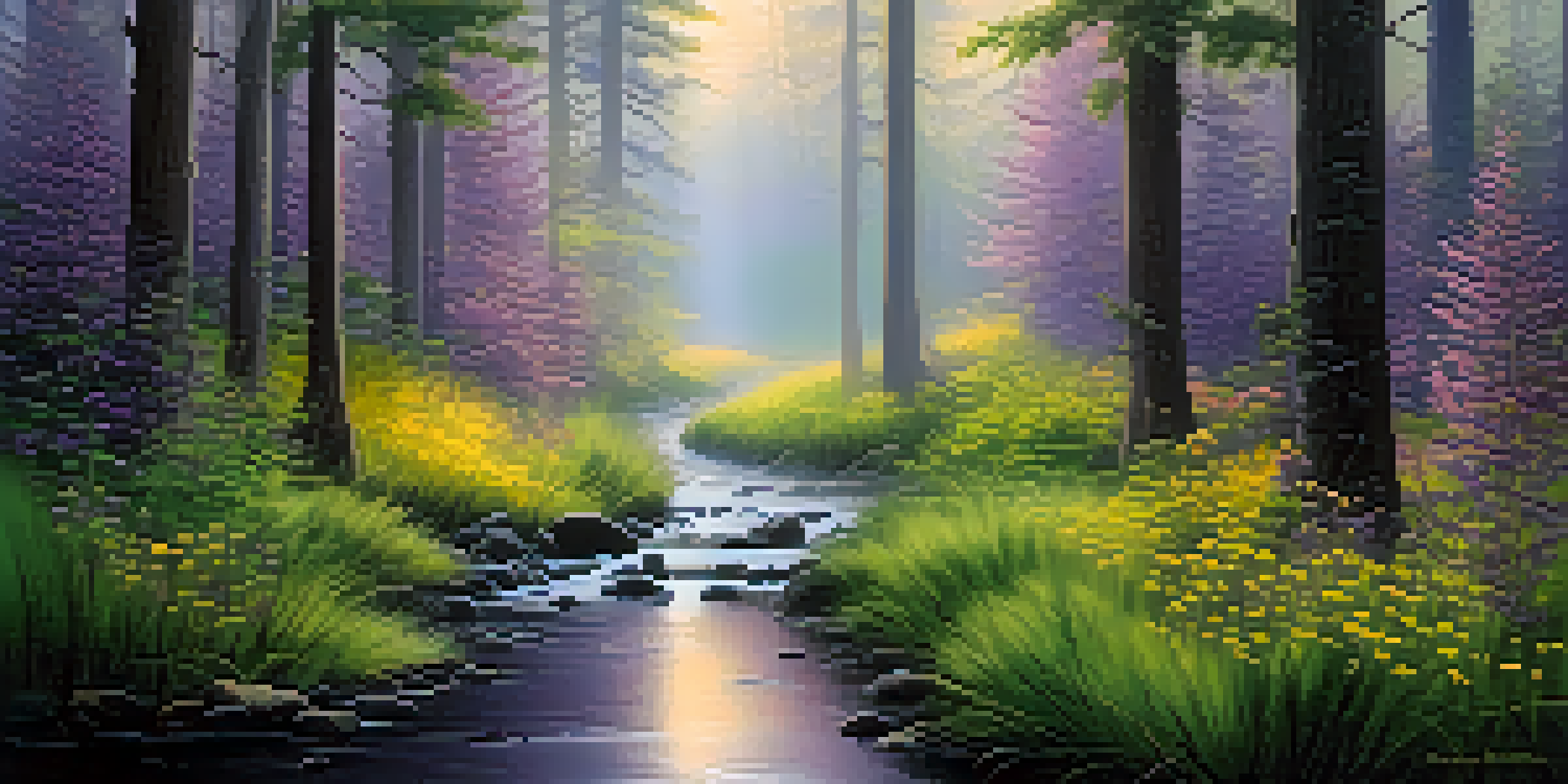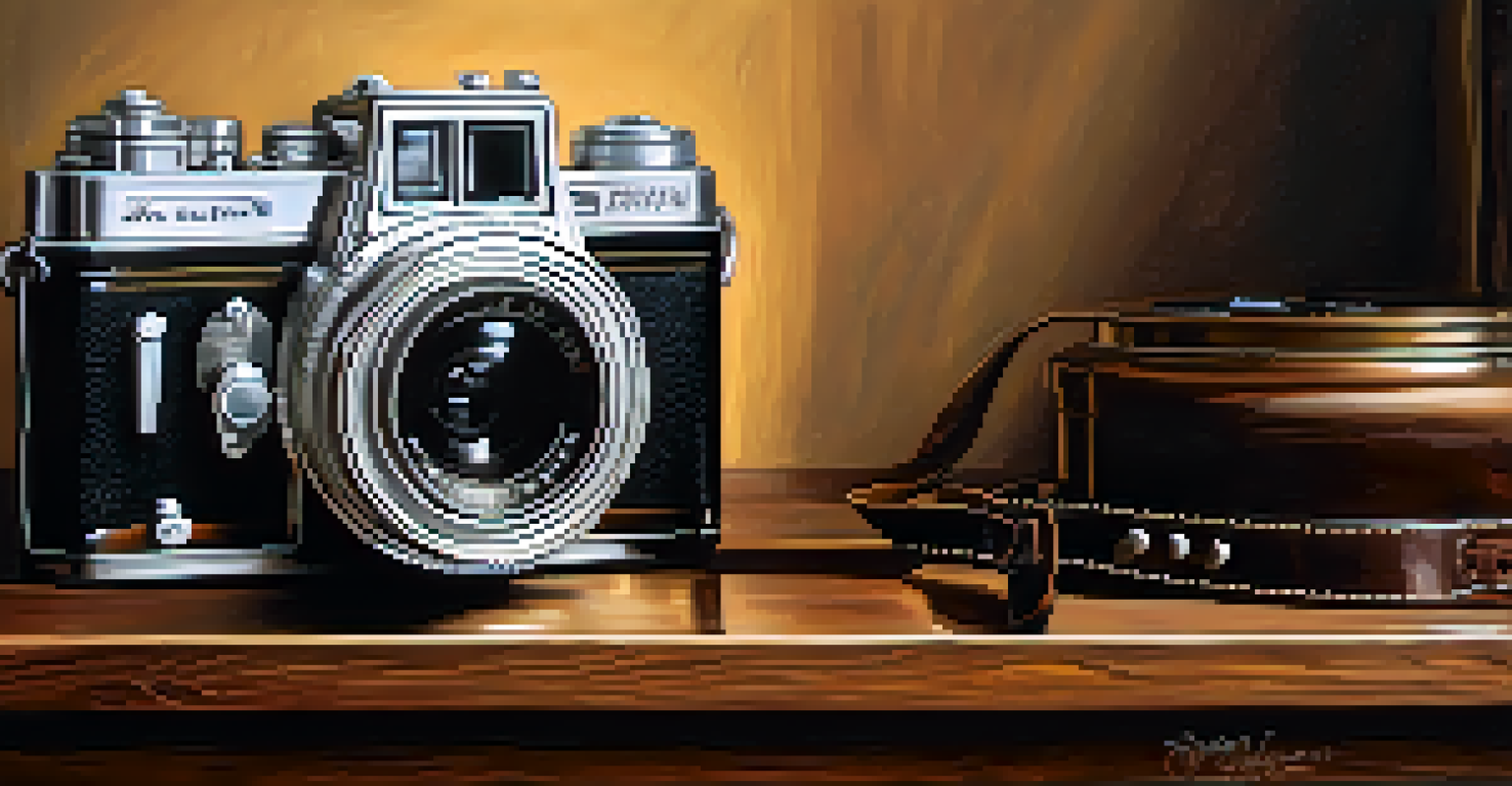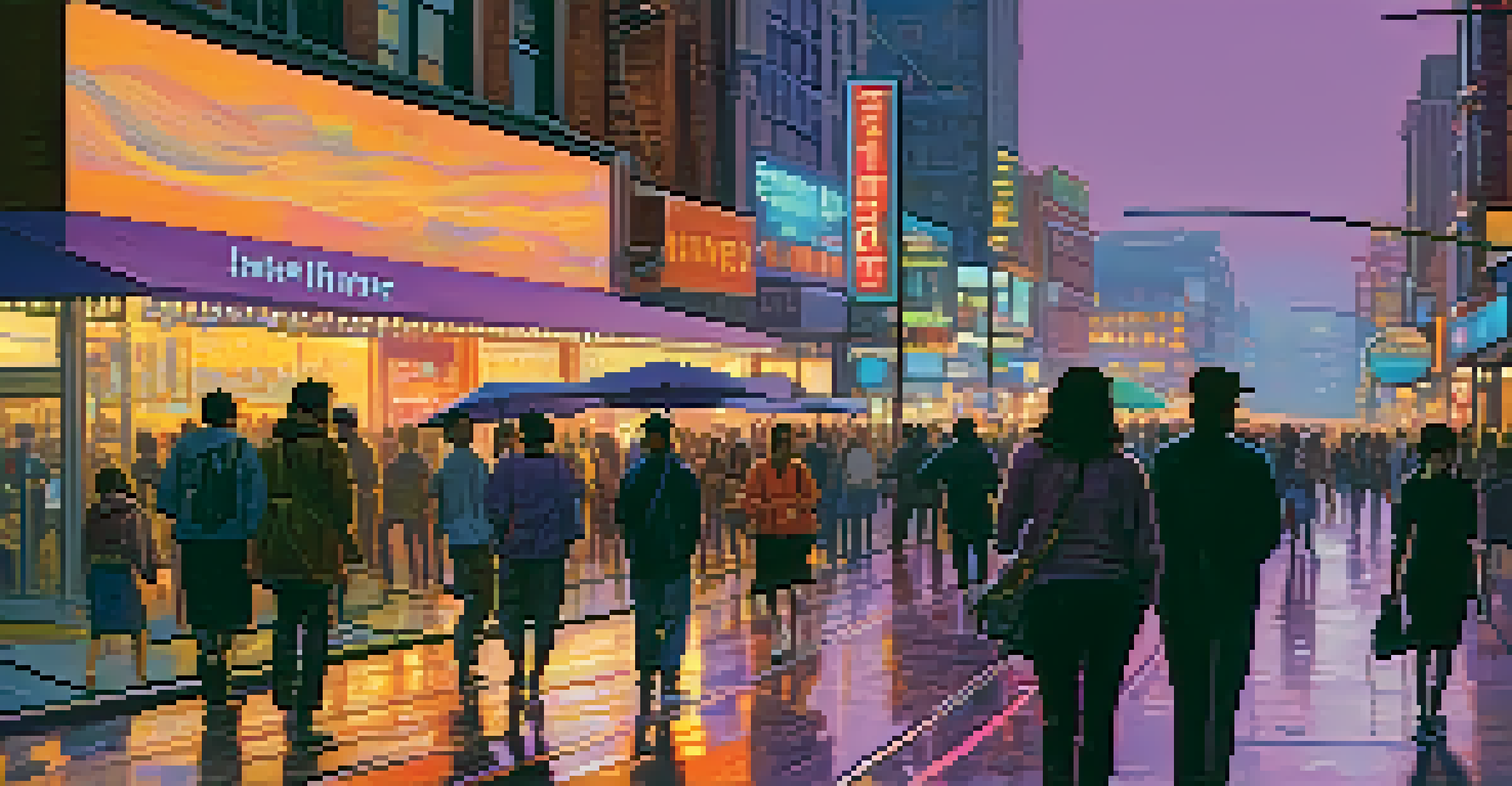Visual Aesthetics: The Psychological Effects of Cinematography

Understanding Cinematography and Its Role in Film
Cinematography is the art of capturing moving images, and it plays a crucial role in storytelling. Through techniques such as framing, lighting, and camera movement, cinematographers create a visual language that enhances the narrative. For instance, a close-up shot can invoke intimacy, while a wide-angle view can convey isolation. This visual storytelling not only captivates the audience but also guides their emotional responses throughout the film.
Cinematography is infinite in its possibilities... much more so than music or a poem.
By manipulating visual elements, cinematographers can evoke specific feelings that resonate with viewers. Think of how a dimly lit scene can create a sense of foreboding, while vibrant colors can evoke joy or nostalgia. These choices are deliberate; they help to establish mood and tone, shaping our psychological experience of the film. The aesthetic choices made in cinematography serve as a bridge between the audience and the emotional core of the story.
Ultimately, cinematography is more than just technical skill; it's about crafting an emotional journey for the viewer. Each shot is carefully considered to elicit a reaction, making the audience feel as if they are part of the narrative. This intricate relationship between visuals and emotions is what makes films powerful storytelling tools.
The Power of Color in Cinematography
Color is a vital component of cinematography, influencing emotions and perceptions on a subconscious level. Warm colors like reds and yellows often convey feelings of warmth and happiness, while cool colors, such as blues and greens, can evoke calmness or sadness. For example, in films like 'The Grand Budapest Hotel,' the vibrant color palette is used to create an inviting yet whimsical atmosphere, drawing viewers into the story's unique world.

Moreover, color grading in post-production allows filmmakers to enhance the emotional undertones of their scenes. A scene can be transformed by altering its color scheme to reflect the character's emotional state or the overall mood of the film. This technique adds depth to the narrative, allowing the audience to connect more profoundly with the characters and their journeys.
Cinematography Enhances Storytelling
Cinematography uses visual techniques like lighting, color, and framing to create an emotional journey that engages the audience.
In essence, color in cinematography acts as a silent narrator, guiding the audience's feelings without the need for dialogue. By understanding the psychological effects of color, filmmakers can craft visually stunning narratives that resonate on emotional and psychological levels.
Lighting Techniques and Their Emotional Impact
Lighting is another powerful tool in cinematography that shapes the viewer's emotional experience. High-key lighting, characterized by bright illumination and minimal shadows, creates a cheerful and upbeat atmosphere, often seen in romantic comedies. Conversely, low-key lighting, with its heavy shadows and stark contrasts, can generate tension or unease, frequently utilized in horror films.
The camera is a instrument that teaches people how to see without a camera.
Consider how a single light source can create dramatic effects; a spotlight may focus the viewer's attention on a character, emphasizing their isolation or inner turmoil. This technique is effectively used in films like 'The Shawshank Redemption,' where lighting plays a crucial role in highlighting the protagonists' struggles. Such choices can enhance the narrative by visually representing themes and emotions.
Ultimately, effective lighting design not only supports the story but also enhances the viewer's psychological engagement. By manipulating light, cinematographers can create an immersive experience that resonates with audiences long after the credits roll.
Framing and Composition in Visual Storytelling
Framing and composition involve how subjects are arranged within a shot, significantly impacting the viewer's perception and emotional response. The rule of thirds, a common guideline in photography and cinematography, suggests placing key elements along imaginary lines to create balance and interest. This technique can draw attention to important aspects of a scene, subtly guiding the audience's focus.
For instance, a character positioned in the center of a frame can signify importance or dominance, while off-center placement can evoke feelings of tension or imbalance. This deliberate arrangement can enhance the storytelling by visually representing the character's emotional state or their relationship with other characters. It's a silent yet powerful way to convey narrative depth.
Color Shapes Emotional Responses
Color in cinematography influences viewers' emotions subconsciously, enhancing the narrative and deepening the connection with characters.
In summary, the composition of a shot contributes significantly to emotional resonance. By understanding how framing influences perception, filmmakers can craft scenes that not only look beautiful but also evoke meaningful connections with viewers.
Camera Movement and Its Psychological Effects
Camera movement is a dynamic aspect of cinematography that can heighten emotional engagement. Techniques such as pans, tilts, and tracking shots can create a sense of urgency or intimacy, depending on how they're executed. For example, a swift tracking shot may induce excitement or tension, while a slow pan can evoke contemplation or melancholy, pulling the audience deeper into the narrative.
These movements serve to guide the viewer's attention and shape their emotional response to the unfolding story. In action films, rapid camera movements can mimic the adrenaline rush of the scene, while in dramas, slower movements allow for reflection and connection with the characters. This intentional pacing is crucial for establishing the film's overall tone.
Ultimately, camera movement acts as a narrative device, influencing how viewers perceive and feel about the story. By strategically using movement, filmmakers can effectively manipulate emotions, leading to a more immersive cinematic experience.
Symbolism and Visual Metaphors in Cinematography
Symbolism in cinematography often manifests through visual metaphors, which convey deeper meanings beyond the surface of the story. These symbols can be anything from recurring colors to specific objects that represent a character's inner struggle. For example, in 'The Sixth Sense,' the color red symbolizes the presence of the supernatural, effectively heightening the tension and foreshadowing key plot points.
These visual metaphors create layers of meaning that enrich the narrative, allowing viewers to engage on a more profound level. When audiences recognize these symbols, they form connections that enhance their emotional experience. This depth transforms a simple viewing into an interactive exploration of themes and ideas.
Lighting Creates Mood and Tension
Lighting techniques can evoke specific feelings in the audience, from joy to unease, significantly impacting their emotional experience.
In essence, the use of symbolism elevates cinematography from mere image capture to a form of visual poetry. By incorporating meaningful symbols, filmmakers invite the audience to interpret and engage with the story in a more personal way.
Sound Design and Its Relationship to Visual Aesthetics
While cinematography focuses on visual elements, sound design plays an equally important role in shaping the viewer's emotional experience. The interplay between sound and visuals can enhance the psychological effects of a scene, creating a more immersive experience. For instance, a haunting score can amplify the tension in a suspenseful moment, making the visuals even more impactful.
Moreover, sound effects can emphasize visual elements, guiding the audience's attention and emotional response. The sound of footsteps in a quiet scene can create suspense, while cheerful music accompanying a light-hearted moment can elevate the overall mood. This synergy between sound and visuals is crucial for maintaining engagement and enhancing storytelling.

In conclusion, sound design complements cinematography, creating a holistic sensory experience. By understanding how these elements work together, filmmakers can craft narratives that resonate deeply with audiences, leaving a lasting impression on their emotional psyche.
The Future of Cinematography and Psychological Engagement
As technology evolves, the future of cinematography promises exciting new ways to engage audiences psychologically. Innovations like virtual reality and augmented reality are already beginning to transform how stories are told, allowing viewers to experience narratives in immersive ways. This shift opens up new possibilities for emotional engagement, as audiences can interact with the story on a more personal level.
With advancements in CGI and visual effects, filmmakers can create stunning visual landscapes that captivate the imagination. This not only enhances the aesthetic appeal but also allows for more profound explorations of themes and emotions. As filmmakers push the boundaries of creativity, the psychological impact of cinematography will continue to evolve.
Ultimately, the future of cinematography holds immense potential for deepening the connection between visuals and emotions. By embracing technological advancements, filmmakers can craft compelling narratives that resonate with audiences in ways we have yet to imagine.